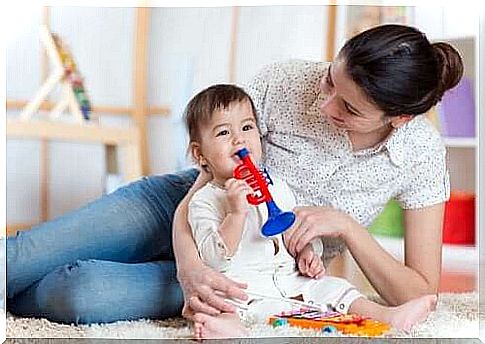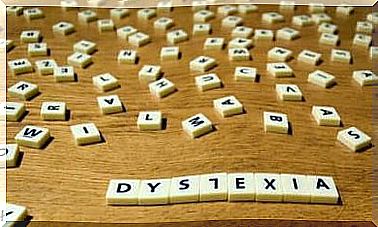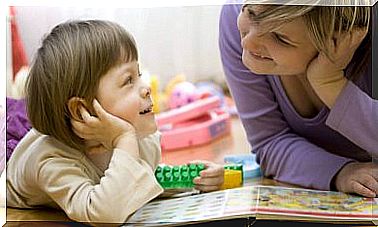Constructive Discipline For Baby

Self-discipline and obedience are important qualities in raising the young and adult of the future. Essential principles such as respect and integrity should be taught to the child from an early age. Constructive discipline promotes the socialization of the baby and ensures better integration into society in the future. Discipline focuses on teaching rather than punishing. In this article, we talk about how parents can provide constructive discipline to their baby.
Constructive discipline for the baby
Constructive discipline is about teaching, guiding and encouraging the child to learn. It does not include Criticizing a child’s ignorance or mistakes he or she has made. Through discipline, a child learns values, boundaries, and rules for how to be part of a family and society. Discipline provides lessons for the child and is designed to affect the baby’s long-term happiness. The use of punishments seeks to shape child behavior through fear.
Through discipline, the consequences of behavior are seen in a new light. When you say “I will punish you for lying to me.” is not the same thing as contemplating lying as an act of reproach. A child who has been disciplined learns to take responsibility for his or her own actions. Using values as a basis for teaching is part of constructive discipline for the baby. The parent-child relationship should follow the guidelines of honesty, respect, high morals, and kindness rather than intimidation. Education based on these values will be rewarding in the future.
How should constructive discipline be applied?
Start early
It is a good idea to start offering constructive discipline to your baby early on. It involves knowledge of the boundaries – both personal and external – of exploiting opportunities and understanding risks. Part of a parent’s responsibilities to their child is to teach the child about dangerous situations. Such an upbringing should always be positive so that the child can learn, accept, and internalize what has been learned successfully.

When you say “no” to a child tenderly with love, the child will learn that everything has its time and place. Sleeping and eating, positive routines, and dangerous situations are all kinds of information that needs to be confirmed on a regular basis.
Music therapy as an aid to integration
At the age of eight months, the baby begins a new process of socialization. At this point, music therapy can be a useful tool. Sounds and movement not only facilitate communication, they also promote social integration. For this reason, music is a great tool for early stimulation as well as for promoting learning.
Active and curious
After the first year, the baby becomes more active, demanding, impulsive, bolder and more curious. At the age of one and a half years, the baby may already be able to make a simple inference. This is a good time to explain to the child why the rules exist. At this age, the child also begins to feel more independent and develops his or her personality. The non-word is essentially part of the vocabulary of a child of this age, and parents must remain strict about it. Parents should explain to the child how the actions have consequences, using language that is easy for a child of that age to understand.
At the ages of two and three, the use of the non-word only intensifies. A child this age wants to do everything himself. It is positive to let the child do things, however, always watching the child for possible dangers. It is important for parents to be vigilant without the baby noticing it and considering it a threat.

What does the child want?
Constructive discipline requires the patience and calm of parents as the child tries to get through his or her own will. In such a case, different methods can be used. Misleading a child can prevent a child from doing prohibited things, and providing alternatives helps the child understand that he or she cannot get everything he or she wants. In this way, the child learns that some things are allowed to be done and some are not allowed to be done.
Deny only the essentials
When a child is said “no” only when it is necessary, the child does not feel too limited. At the same time, action should be taken in connection with the ban. The key is to be consistent. If a child is not allowed to draw on the wall today, he is not allowed to do it tomorrow. Parents should repeat the instructions over and over again to set boundaries for the child and ensure that they are respected. It makes a big difference whether you do this with love or through punishment.
Realistic goals and the use of appropriate words
When applying constructive discipline, it is important to set realistic goals. They should be determined to suit the age and abilities of the child and the prevailing circumstances so that they are achievable. If a child tries to do something, but fails, the parents should praise him or her for the effort. This motivates the child to try again and take risks.
Using the right words greatly affects a child’s behavior. Words like “help,” “magic,” and “guess” help get positive results. An exact instruction like “You can sit here” works better than a vague instruction like “Stay where you are.”
From the age of 3, a child begins to follow the rules set by his or her parents if he or she has been disciplined with love and patience. From the age of four, understanding the rules should be strengthened regularly and with love. When a child is 6-12 years old, the instruction given by the parents should focus on the relationship with the environment.









